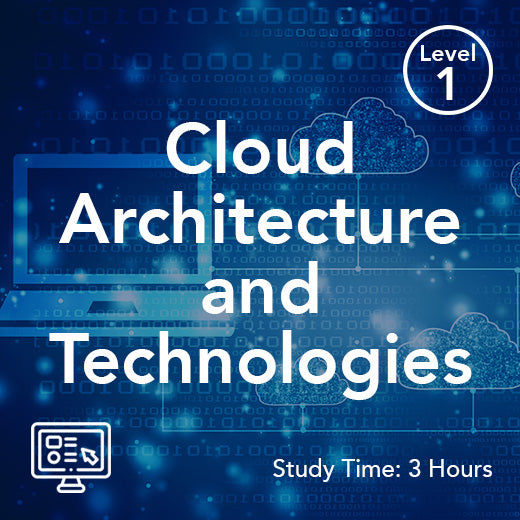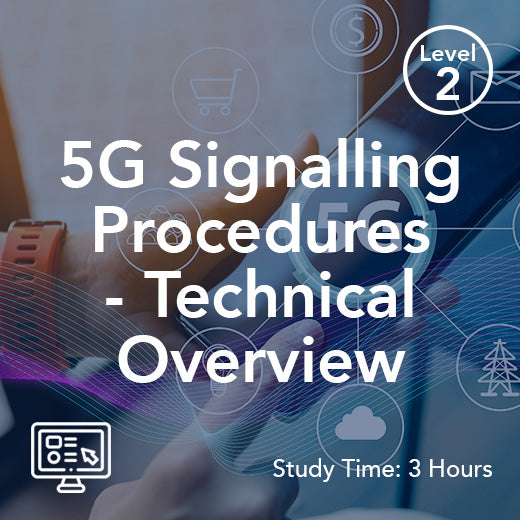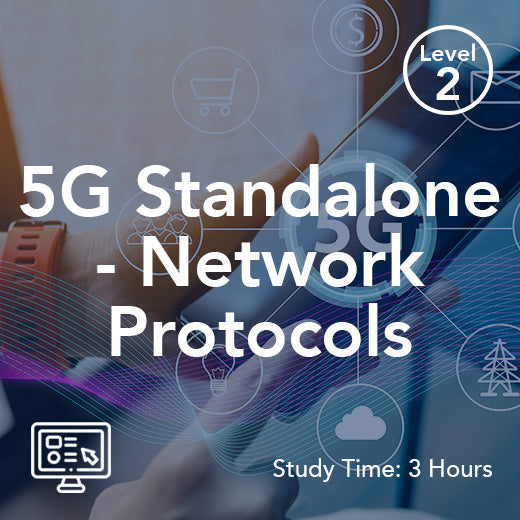Comprendere le nozioni di base: qual è il significato di OAM nelle telecomunicazioni?
- , di Stephanie Burrell
- 9 tempo di lettura minimo
Nel mondo in continua evoluzione delle telecomunicazioni, comprendere il gergo può spesso sembrare come imparare una nuova lingua. Uno di questi termini che appare frequentemente è "OAM", che sta per Operations, Administration e Maintenance. Queste sono le funzioni backbone che garantiscono che una rete funzioni in modo fluido, efficiente e senza intoppi. Dalla gestione delle prestazioni della rete alla risoluzione dei problemi, l'OAM svolge un ruolo cruciale nel mantenere le linee di comunicazione aperte ed efficaci. In questo articolo demistificheremo il significato di OAM ed esploreremo come esso sia alla base della connettività continua che spesso diamo per scontata.
Introduzione all'OAM nelle telecomunicazioni
Nelle telecomunicazioni, il termine OAM è fondamentale. Si suddivide in Operazioni, Amministrazione e Manutenzione, ciascuna delle quali svolge un ruolo distinto nella gestione della rete. Comprendere questi aspetti è fondamentale per garantire che le reti rimangano funzionali, efficienti e affidabili.
Qual è il significato di OAM nelle telecomunicazioni?
Le operazioni si riferiscono alla gestione quotidiana delle reti di telecomunicazioni. Implica la gestione delle risorse di rete, la garanzia di prestazioni ottimali e la supervisione delle attività di rete.
L’amministrazione comprende le politiche e le procedure essenziali per la governance della rete. Ciò include la gestione degli account utente, il monitoraggio delle attività del sistema e il mantenimento dei protocolli di sicurezza.
La manutenzione prevede controlli e riparazioni di routine per mantenere la rete in buone condizioni. Ciò garantisce che eventuali problemi vengano risolti prima che si aggravino.
Insieme, questi componenti costituiscono la spina dorsale delle reti di telecomunicazioni, garantendone il funzionamento senza interruzioni. Comprendere il significato dell'OAM e i suoi risultati è essenziale per chiunque sia coinvolto nel settore delle telecomunicazioni, poiché è alla base della stabilità e dell'efficienza dei sistemi di comunicazione su cui facciamo affidamento quotidianamente.
Importanza dell'OAM nelle telecomunicazioni
L'OAM è parte integrante del settore delle telecomunicazioni, garantendo che le reti funzionino senza interruzioni. Operazioni fluide significano che i clienti subiscono meno interruzioni del servizio, il che è fondamentale per le comunicazioni sia personali che professionali.
Senza un OAM efficace, le reti possono soffrire di prestazioni ridotte e tempi di inattività maggiori. Ciò può portare all’insoddisfazione dei clienti, con conseguente perdita di entrate e una reputazione offuscata per i fornitori di servizi.
Inoltre, l’OAM svolge un ruolo chiave nella gestione della sicurezza . Monitorando continuamente le attività di rete, OAM aiuta a rilevare e prevenire accessi non autorizzati o potenziali violazioni, salvaguardando le informazioni sensibili.
Infine, OAM garantisce la conformità agli standard e alle normative di settore. Ciò è fondamentale per mantenere la fiducia dei clienti ed evitare potenziali problemi legali che potrebbero derivare dalla non conformità.
Componenti dell'OAM
Ciascun componente dell'OAM nelle telecomunicazioni - Operazioni, Amministrazione e Manutenzione - ha uno scopo specifico nel quadro generale. Insieme, creano un approccio completo alla gestione della rete.
Operazioni nel settore delle telecomunicazioni
Le operazioni nel settore delle telecomunicazioni riguardano la garanzia che la rete funzioni in modo efficiente. Ciò comporta la gestione delle risorse della rete e l'ottimizzazione delle prestazioni. Gli operatori devono monitorare il traffico, modificare le configurazioni di rete e risolvere i problemi non appena si presentano.
Monitoraggio del traffico : gli operatori tengono d'occhio il flusso di dati per garantire una comunicazione fluida.
Modifiche della configurazione : vengono apportate le modifiche necessarie per ottimizzare le prestazioni della rete.
Risoluzione dei problemi : viene intrapresa un'azione immediata per risolvere eventuali problemi di rete.
Una gestione efficace delle operazioni garantisce che i servizi di telecomunicazione vengano forniti senza problemi agli utenti. Concentrandosi su questi compiti chiave, gli operatori possono mantenere elevati livelli di servizio e prevenire potenziali interruzioni.
Amministrazione nelle Telecomunicazioni
L'amministrazione nelle telecomunicazioni si riferisce alla gestione sistematica delle politiche e delle procedure di rete. Questo componente garantisce che tutte le attività siano in linea con gli obiettivi organizzativi e i requisiti normativi.
Gestione utenti : gli amministratori controllano l'accesso alla rete, garantendo che solo gli utenti autorizzati possano connettersi.
Monitoraggio delle attività : il monitoraggio continuo delle attività di rete aiuta a mantenere la responsabilità e la trasparenza.
Protocolli di sicurezza : l'implementazione di solide misure di sicurezza è essenziale per proteggere i dati sensibili.
Attraverso un'amministrazione diligente, le reti possono mantenere l'integrità e la sicurezza operativa, fornendo un servizio affidabile a tutti gli utenti.
Manutenzione nelle Telecomunicazioni
La manutenzione nelle telecomunicazioni prevede controlli e riparazioni regolari per garantire la longevità della rete. Questo approccio proattivo aiuta a identificare potenziali problemi prima che incidano sul servizio.
Vengono effettuate ispezioni di routine per valutare le condizioni dei componenti della rete. Affrontando tempestivamente i problemi minori, è possibile evitare gravi interruzioni.
Le attività di manutenzione includono aggiornamenti software, riparazioni hardware e diagnostica del sistema. Queste attività sono essenziali per mantenere la rete in condizioni ottimali.
Dando priorità alla manutenzione, i fornitori di telecomunicazioni possono garantire una qualità del servizio costante e prolungare la durata della loro infrastruttura di rete.
Applicazioni dell'OAM
Le applicazioni OAM sono numerose e varie e contribuiscono alla salute generale di una rete di telecomunicazioni e della comunità più ampia. Dal miglioramento delle prestazioni alla garanzia dell'affidabilità, l'OAM è indispensabile.
Miglioramento delle prestazioni della rete
OAM è fondamentale per migliorare le prestazioni della rete . Monitorando continuamente le attività della rete, gli operatori possono identificare i colli di bottiglia e implementare soluzioni per migliorare l’efficienza.
Monitoraggio in tempo reale : tiene traccia dei parametri delle prestazioni della rete per rilevare tempestivamente i problemi.
Allocazione delle risorse : garantisce un utilizzo ottimale delle risorse di rete per prevenire la congestione.
Ottimizzazione delle prestazioni : vengono apportate modifiche per migliorare la velocità e l'affidabilità.
Questi sforzi si traducono in un servizio più affidabile, a vantaggio sia dei fornitori di servizi che degli utenti.
Garantire l'affidabilità della rete
L’affidabilità della rete è una pietra angolare di servizi di telecomunicazione efficaci. OAM svolge un ruolo fondamentale nel mantenere questa affidabilità attraverso la sua continua supervisione e gestione.
Affrontando potenziali problemi in modo proattivo, OAM aiuta a ridurre al minimo i tempi di inattività e le interruzioni del servizio. Questo è fondamentale per mantenere la fiducia e la soddisfazione del cliente.
Controlli e manutenzione regolari garantiscono che la rete rimanga resistente a varie sfide, dai guasti hardware alle minacce alla sicurezza. Questo approccio garantisce che gli utenti godano di una connettività coerente e affidabile.
Facilitare la risoluzione dei problemi
L'OAM è determinante nel facilitare la risoluzione dei problemi all'interno delle reti di telecomunicazioni. Quando sorgono problemi, i processi OAM forniscono un approccio strutturato per identificare e risolvere i problemi.
Strumenti diagnostici : aiutano a individuare rapidamente la causa principale dei problemi di rete.
Approccio sistematico : garantisce che i problemi siano affrontati metodicamente, riducendo i tempi di risoluzione.
Documentazione completa : conserva i record dei problemi passati e delle soluzioni per riferimento futuro.
Questo approccio strutturato garantisce che i problemi vengano risolti in modo efficiente, riducendo al minimo l'impatto sugli utenti.
Sfide nell'implementazione dell'OAM
Nonostante i vantaggi, l’implementazione dell’OAM nelle telecomunicazioni comporta delle sfide. Questi vanno dalla complessità delle reti moderne agli standard in evoluzione e alle implicazioni sui costi.
Complessità dei sistemi di rete
Le moderne reti di telecomunicazioni sono sistemi complessi, il che rende impegnativa l’implementazione dell’OAM. La varietà di tecnologie e protocolli in uso può complicare le attività operative, amministrative e di manutenzione.
Tecnologie diverse : componenti diversi richiedono conoscenze e strumenti specializzati.
Interconnettività : garantire una perfetta integrazione tra i vari sistemi è una sfida.
Scalabilità : man mano che le reti crescono, il mantenimento dell’efficienza diventa più impegnativo.
Affrontare queste complessità è essenziale per un OAM efficace nel settore delle telecomunicazioni.
Implicazioni sui costi
L’implementazione dell’OAM può essere costosa, in particolare per gli operatori di telecomunicazioni più piccoli. Le spese associate all'OAM includono sia i costi di installazione iniziali che le spese operative correnti.
Investimento iniziale : l’impostazione di sistemi OAM può richiedere un capitale significativo.
Costi operativi : il monitoraggio continuo e la manutenzione richiedono risorse e personale.
Ritorno sull'investimento : bilanciare i costi con i vantaggi di prestazioni di rete migliorate può essere difficile.
Un’allocazione efficiente delle risorse è fondamentale per gestire queste implicazioni sui costi.
Standard tecnologici in evoluzione
Il rapido ritmo del cambiamento tecnologico rappresenta una sfida per l’implementazione dell’OAM. Stare al passo con l’evoluzione degli standard e delle migliori pratiche richiede apprendimento e adattamento continui.
Standard di settore : la conformità alle nuove normative è essenziale per mantenere la qualità del servizio.
Innovazione tecnologica : l’adozione di nuove tecnologie può migliorare l’efficacia dell’OAM.
Apprendimento continuo : l'istruzione e la formazione continua sono necessarie per rimanere aggiornati.
L’adattamento a questi cambiamenti garantisce che l’OAM rimanga efficace e pertinente.
Il futuro dell'OAM nelle telecomunicazioni
Il futuro dell’OAM nelle telecomunicazioni è promettente, guidato dalle innovazioni e dall’integrazione di nuove tecnologie. Questa evoluzione determinerà il modo in cui le reti verranno gestite e mantenute.
Innovazioni nelle tecnologie OAM
Le innovazioni tecnologiche stanno trasformando l’OAM, rendendolo più efficiente ed efficace. Questi progressi semplificano i processi e migliorano la gestione della rete.
Automazione : riduce l'intervento manuale, aumentando l'efficienza.
Analisi avanzata : fornisce informazioni più approfondite sulle prestazioni della rete.
Soluzioni basate sul cloud : abilita sistemi OAM scalabili e flessibili.
L'adozione di queste innovazioni porterà a un miglioramento delle operazioni di rete e della soddisfazione degli utenti.
OAM nelle reti di prossima generazione
Con l’evoluzione delle reti di telecomunicazioni, l’OAM svolgerà un ruolo cruciale nelle reti di prossima generazione. Queste reti richiedono strategie di gestione sofisticate per gestire maggiori carichi di dati e complessità.
Reti 5G : richiedono OAM avanzato per un funzionamento senza interruzioni.
Internet delle cose (IoT) : l'integrazione presenta nuove sfide per la gestione della rete.
Edge Computing : richiede approcci OAM decentralizzati.
L’OAM in questi contesti sarà fondamentale per mantenere la qualità e l’affidabilità del servizio.
Il ruolo dell’intelligenza artificiale nell’OAM
L’intelligenza artificiale sta rivoluzionando l’OAM, offrendo nuove funzionalità per la gestione della rete. Le soluzioni basate sull’intelligenza artificiale migliorano il processo decisionale e l’efficienza operativa.
Manutenzione predittiva : l’intelligenza artificiale può anticipare i problemi prima che si verifichino.
Risposte automatizzate : consentono una risoluzione più rapida dei problemi di rete.
Approfondimenti basati sui dati : forniscono informazioni preziose per ottimizzare le prestazioni.
Incorporare l’intelligenza artificiale nelle pratiche OAM sarà essenziale per rimanere all’avanguardia nel panorama competitivo delle telecomunicazioni.
UN

































